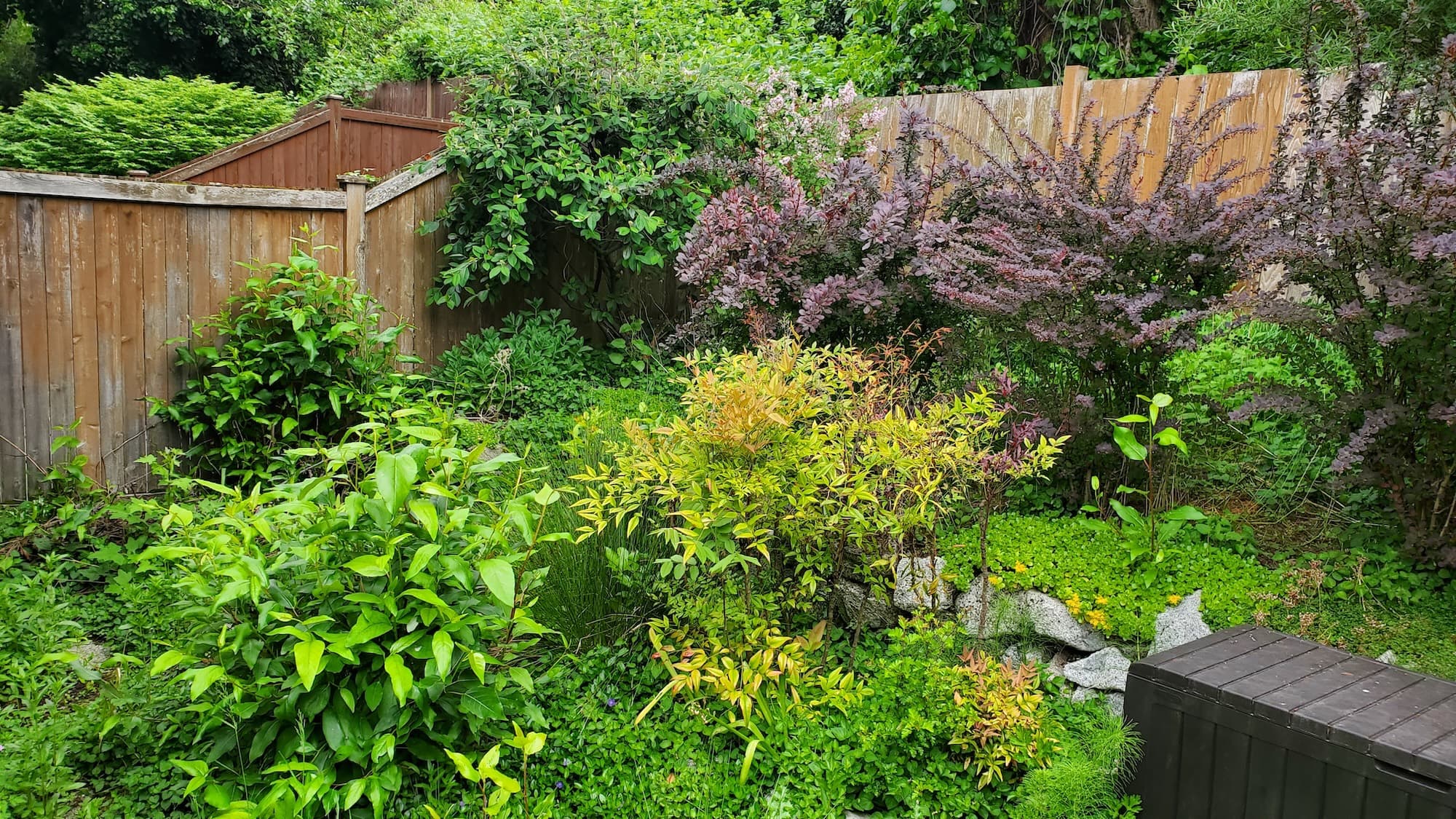Brush Pollinator Habitat Restoration
Homeowner’s Issue
Brush yards face a mix of challenges that affect pollinator habitat success. Soils can range from compacted clays in flat lots to shallow, rocky pockets on slopes, and the region’s variable rainfall means some seasons are wet enough to encourage moss and weeds while dry spells stress young plants. Many homes near river corridors and community parks see more invasive grasses and opportunistic weeds that outcompete native blooms. Sun exposure varies widely across properties — south-facing slopes get hot and dry, while north-facing spots stay cooler and support moss and shade-tolerant species. Drainage issues on modest slopes often cause runoff and erosion, stressing roots and reducing bloom times. HOA rules and curb standards in some neighborhoods favor tidy plantings, so homeowners want landscapes that meet guidelines while supporting wildlife. Typical yard problems include shallow, nutrient-poor topsoil, poor drainage at downspouts, and a mix of established ivy or grass that makes conversions slow. In Brush, an effective pollinator restoration blends plants suited to local sun, soil, and moisture patterns, uses mulch and organic soil amendments to retain water and suppress weeds, and respects curb appeal and HOA expectations so the garden is both wildlife-friendly and low-maintenance.
Our Quality Service
We design and install sustainable pollinator habitats tailored to Brush properties. We prioritize native perennials, shrubs, and season-long bloom sequences suited to local sun exposure and soil conditions. Work includes careful soil prep, erosion control on slopes, and rain-wise planting near drainage paths to reduce runoff. Our approach avoids chemical herbicides — we use manual removal, organic methods, and mulches to suppress weeds. Benefits include improved curb appeal, safer yards for kids and pets, reduced maintenance, and stronger, lasting habitat that supports bees, butterflies, and beneficial insects.
What’s Included
- Site assessment focused on soil, sun, drainage, and HOA guidelines
- Custom planting plan using native species with staggered bloom times
- Soil amendment and mulching (organic compost)
- Plant installation and staking where needed
- Initial establishment care and one follow-up visit
Options/upgrades:
- Mulch + landscape fabric for high-weed zones
- Organic weed-control follow-up visits (manual and mechanical)
- Haul-away green waste vs. curbside green bin drop-off
- Wildflower seed mix for open lawn conversions
- Pollinator houses (bee hotels) and habitat features
Before & After / Expectations
Expect some noise from digging and planting during installation and a short period of visible debris until materials are hauled away. We may need clear access to water and gates, and slope work can require extra manpower for safety. After installation, plants need regular watering for the first season and light weeding until roots establish. Local care tips for Brush yards: water deeply but infrequently to encourage deep roots, monitor shady spots for moss buildup, pull young invasive seedlings early, and refresh mulch annually to conserve moisture and suppress weeds.
FAQs
How long does installation take?
Most small-to-medium front-yard projects take 1–3 days; larger restorations are scheduled by quote.Will this meet HOA rules?
Yes — we design with curb appeal and common HOA standards in mind; bring guidelines to the consultation.Do you use herbicides?
No — we use only sustainable, non-chemical methods for weed control and establishment.What about drainage or slope issues?
We add proper soil amendments, mulching, and drainage-friendly plant choices; erosion control is included where needed.
Call to Action
Ready to turn your Brush yard into a low-maintenance pollinator haven? Book a free estimate with our local team — fast scheduling and reliable, sustainable results. Email neatandtidyseattle@gmail.com or call 206-538-9344 to get started.










